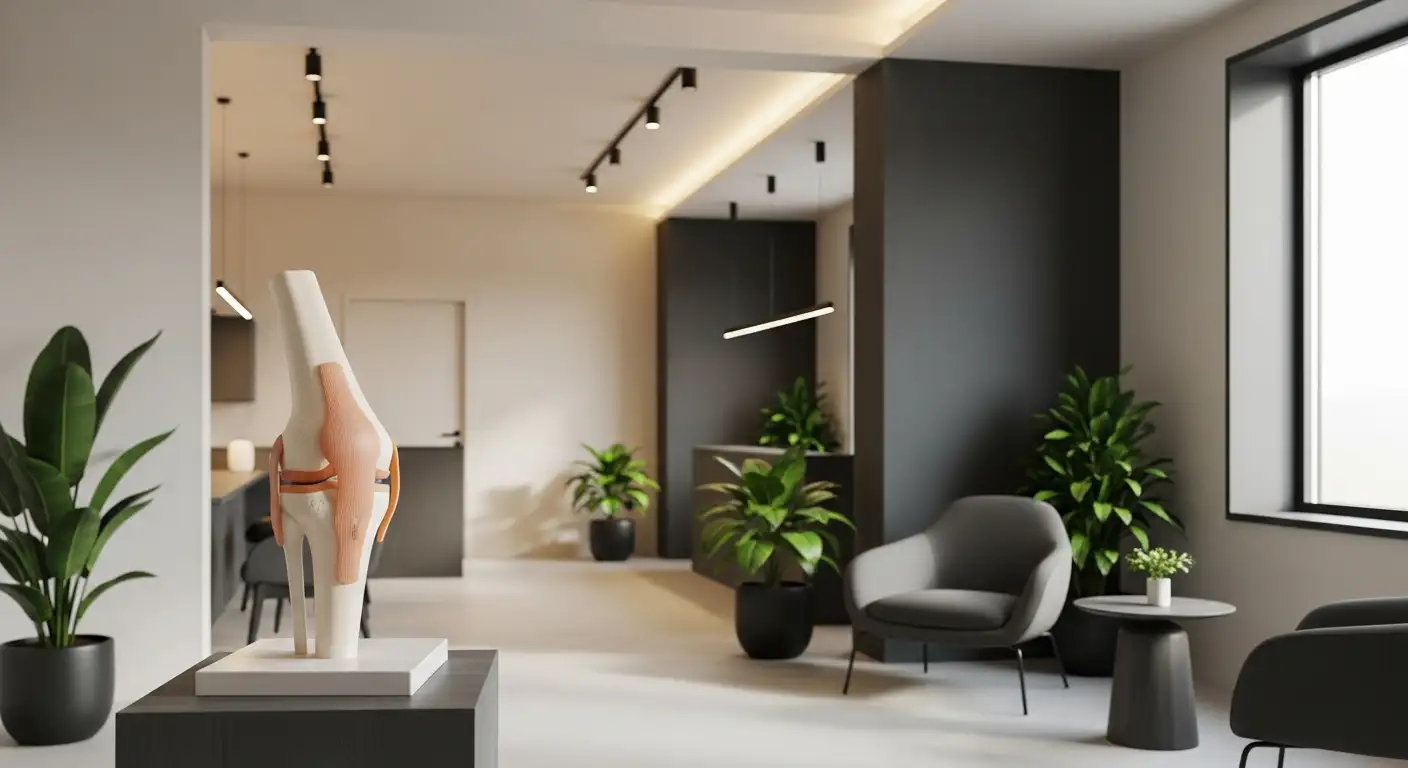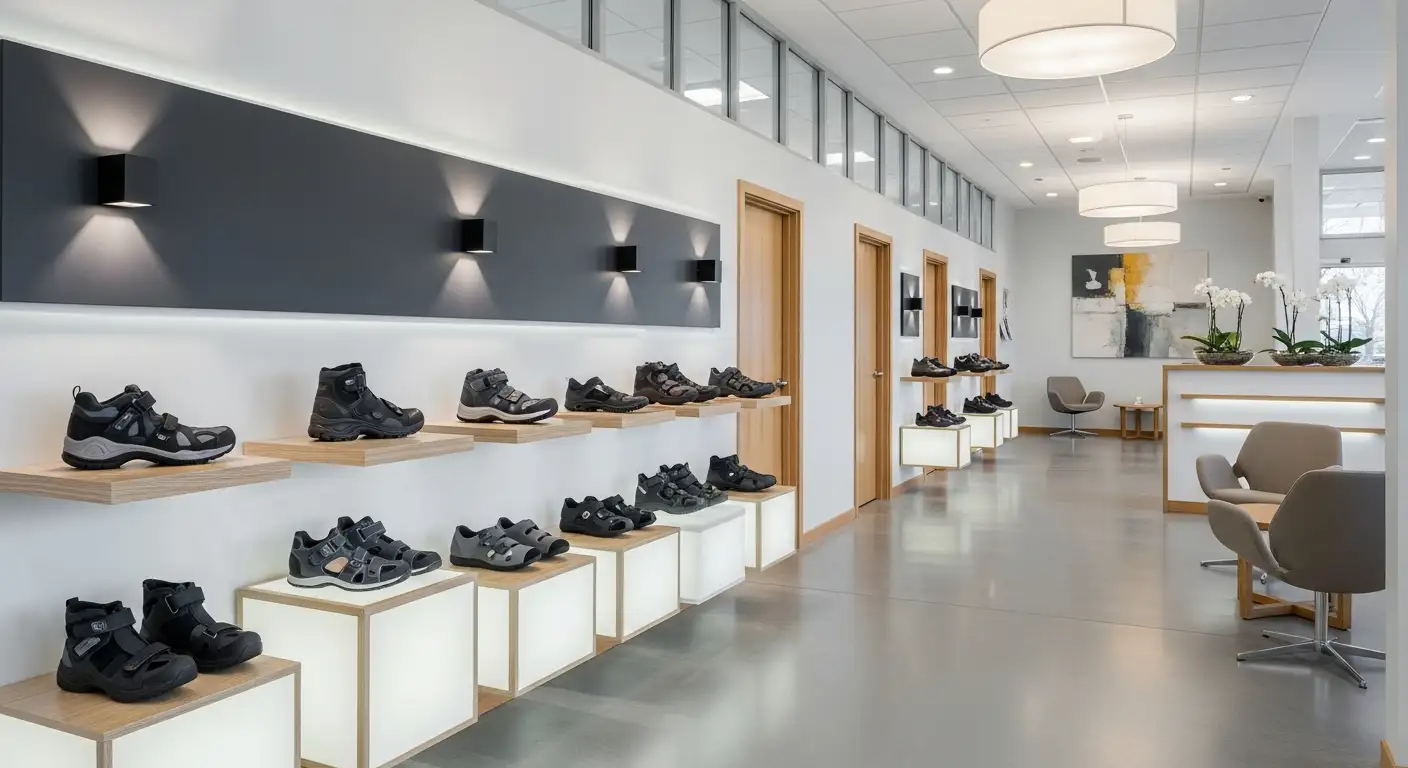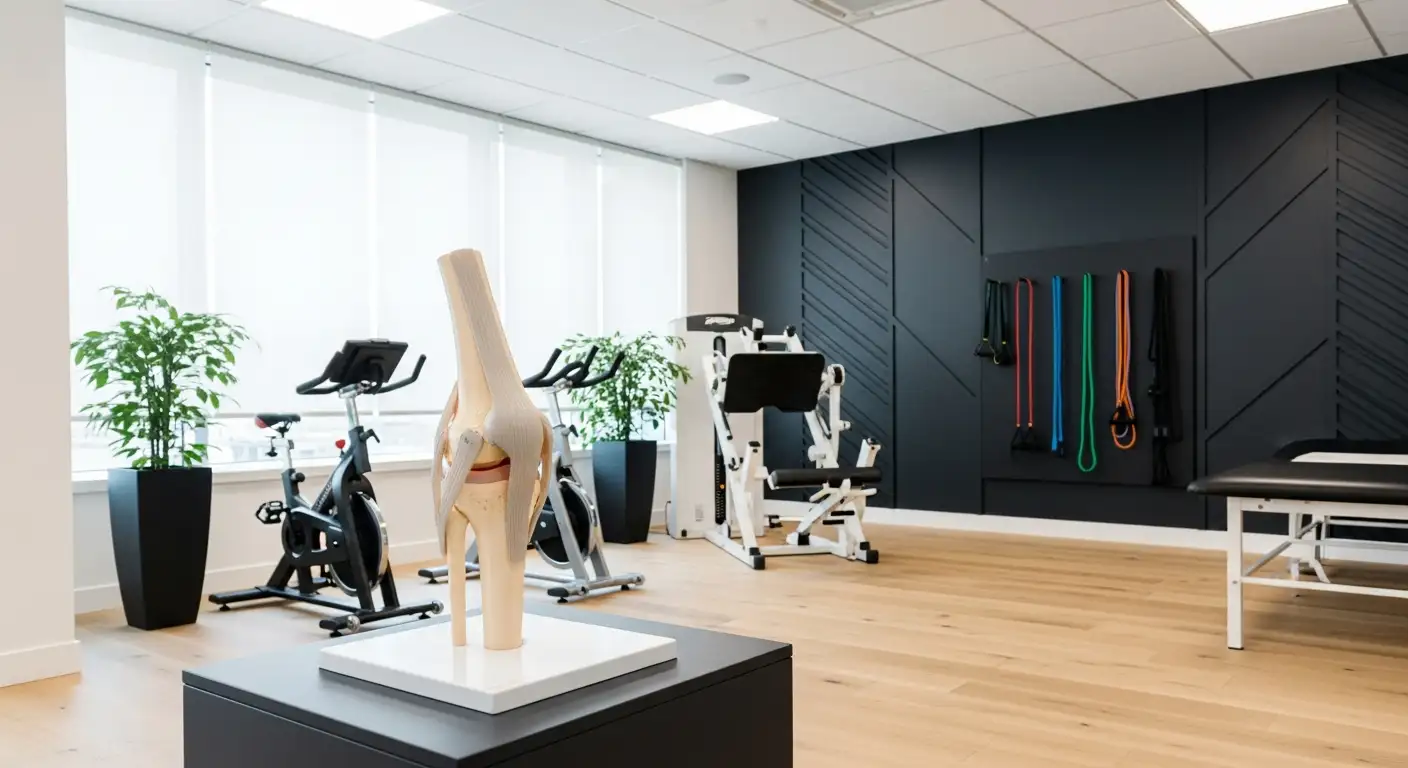Understanding Knee Pain
Knee pain is a widespread issue that can affect individuals at any stage of life. The discomfort may stem from various causes and manifest in different ways.
Causes of Knee Pain
Common triggers for knee pain include physical trauma, infections, metabolic disorders, and tissue problems. Knee issues can occur due to a variety of factors and activities, such as running, jumping, or lifting heavy objects.

Cause of Knee PainDescriptionPhysical TraumaInjuries like fractures, ruptured ligaments, or torn cartilage. Learn moreInfectionsBacterial or viral infections affecting the joint.Metabolic ProblemsConditions like gout can lead to pain and inflammation. Pictures of gout in kneeTissue DisordersIssues such as tendinitis or inflammation resulting from overuse.
Knee trauma may lead to overstretching or overworking tendons, causing conditions like tendonitis or ruptures, resulting in significant knee pain. Activities that strain the tendons can contribute to these injuries.
Types of Knee Pain
Knee discomfort can arise from numerous factors, including injuries, mechanical issues, and various types of arthritis. Some common types include:
Type of Knee PainDescriptionACL InjuriesTear of the anterior cruciate ligament leading to instability.Torn MeniscusDamage to the cartilage in the knee.Mechanical ProblemsLoose bodies in the knee joint causing pain or locking.ArthritisInflammation of the joints, including osteoarthritis and rheumatoid arthritis.
The pain can range from mild discomfort to severe, impacting daily activities and mobility. If someone experiences persistent knee discomfort or notices symptoms like swelling or locking, they should consider seeking medical advice. For additional information on knee conditions, explore resources on issues like why does my knee lock up.
Understanding the various causes and types of knee pain is essential for effective management and treatment options. Knowledge about one's condition can significantly aid in addressing issues promptly, potentially preventing further complications.
Injury-Related Knee Pain
Knee pain can often result from injuries sustained during physical activity. Understanding the type of injury and its implications is essential for effective management. In this section, the focus will be on three primary causes of injury-related knee pain: trauma, tendon injuries, and bursitis.
Trauma and Knee Pain
Acute knee pain can arise from various traumatic incidents. Common causes include sprained and torn cruciate ligaments, tendon ruptures, meniscal injuries, knee dislocation, and a dislocated kneecap (patella) WebMD. These injuries can lead to significant discomfort and may prevent individuals from engaging in their regular activities.
Type of TraumaDescriptionSprained LigamentsStretching or tearing of ligamentsTorn Cruciate LigamentsInjury to the ligaments connecting the kneeMeniscal InjuriesDamage to the cartilage of the kneeDislocated KneecapMisalignment of the kneecap
Tendon Injuries and Knee Pain
Knee trauma can often result in overworking or overstretching of the tendon, leading to inflammation, tendinitis, or even ruptures. Common activities that may cause knee tendon injuries include running, jumping, and lifting heavy items Medical News Today.
Individuals experiencing pain in the knee related to tendon injuries typically report symptoms such as:
Type of Tendon InjuryCommon Activities InvolvedPatellar TendonitisJumping, runningQuadriceps Tendon RuptureHeavy lifting, quick directional changes
Bursitis and Knee Pain
Bursitis is the inflammation of the bursae, small fluid-filled sacs that cushion the knee joint. An injury that inflames these bursae can lead to swelling, warmth, pain, and stiffness in the knee. Non-traumatic factors including prolonged kneeling or repetitive motion can also trigger bursitis.
Treatment options for bursitis may include rest, ice, elevation of the limb, and in some cases, steroid injections Medical News Today.
Symptom of BursitisDescriptionSwellingVisible swelling or puffiness around the kneeWarmthIncreased temperature around the knee jointPainDiscomfort that can worsen with movement
Recognizing the nature of knee pain is important for effective treatment. Individuals who frequently experience knee pain or those who have pain that feels like it needs to pop but won't should consider consulting a healthcare professional for further evaluation. For more insights on knee-related issues, check out articles on why does my knee lock up and hyperextension knee brace.
Chronic Conditions and Knee Pain
Chronic conditions can significantly influence knee pain, manifesting as discomfort and restricted movement. Three prevalent conditions are osteoarthritis, gout, and rheumatoid arthritis.
Osteoarthritis and Knee Pain
Osteoarthritis is a degenerative disorder that leads to the deterioration of cartilage and surrounding tissues in the knee. This condition impacts approximately 10% of men and 13% of women over the age of 60 in the United States. Its symptoms include pain, stiffness, and joint dysfunction Medical News Today. It is the most common type of arthritis, often manifesting in individuals over 50. Symptoms can include:
Additionally, osteoarthritis affects more than 32.5 million Americans, commonly causing decreased range of motion and flexibility UC Davis Health.
SymptomDescriptionPainAching or sharp discomfort around the kneeStiffnessTightness, especially after sittingSwellingVisible inflammation around the jointLimited range of motionDifficulty bending or straightening the knee
Gout and Knee Pain
Gout is a metabolic disorder marked by elevated levels of uric acid in the body, leading to the formation of crystals in the joints. This condition can result in severe pain, swelling, and inflammation in the knee, as well as a decreased range of motion Medical News Today. Gout flare-ups often occur suddenly, typically at night, and can be accompanied by redness and warmth in the affected joint. It is key for individuals experiencing symptoms of gout to seek medical advice and proper management.
SymptomDescriptionJoint PainIntense pain, often sudden, typically affecting the kneeSwellingNoticeable swelling in the affected jointRednessSkin redness over the joint areaWarmthIncreased warmth in the affected area
Rheumatoid Arthritis and Knee Pain
Rheumatoid arthritis is a chronic inflammatory disorder affecting more than 1.3 million Americans. This autoimmune condition usually leads to joint pain, stiffness, and swelling, and often impacts smaller joints before potentially involving larger ones like the knee UC Davis Health. Symptoms may include:
Proper diagnosis and management of rheumatoid arthritis are crucial for maintaining mobility and reducing symptoms.
SymptomDescriptionJoint PainPersistent pain that may worsen with restStiffnessProlonged stiffness, especially in the morningSwellingSwollen joints, commonly affecting both kneesReduced range of motionLimitations in knee movement
Understanding these chronic conditions can aid individuals in identifying their symptoms and seeking appropriate treatment. For those who experience persistent knee discomfort, it's vital to consult with healthcare professionals to address concerns related to their knee, particularly when they mention, "my knee feels like it needs to pop but won't."
For more information on managing knee conditions or related injuries, consider exploring our resources on popliteus action or why does my knee lock up.
Specific Knee Pain Conditions
Many individuals experience discomfort or a feeling that their knee needs to pop. This section discusses specific conditions that may contribute to such sensations.
Runner's Knee
Runner's knee refers to a common overuse injury seen in active individuals, especially runners and jumpers. The condition can result in pain around the kneecap and a sensation that the knee needs to pop. This discomfort often arises from repetitive strain on the knee joint, leading to irritation of the cartilage on the kneecap. For more information, check out the article on popliteus action.
Jumper's Knee
Jumper's knee, formally known as patellar tendinitis, affects the tendon that connects the kneecap to the shinbone. This condition can lead to inflammation and pain at the knee, particularly during activities that involve jumping. Those who participate in sports with frequent jumping motions may often feel that their knee requires a pop or adjustment [1].
Osgood-Schlatter Disease
Osgood-Schlatter Disease is a prevalent cause of anterior knee pain in adolescents, particularly those aged 9 to 14. This condition occurs during periods of rapid growth, often coinciding with participation in sports that require running, jumping, or cutting movements. The pain is typically localized below the kneecap at the tibial tubercle, causing tenderness and swelling [2].
Age GroupCommon ActivitiesSymptoms9-14 yearsRunning, jumping, sportsPain, tenderness, swelling
IT Band Syndrome
IT Band Syndrome involves inflammation of the iliotibial (IT) band, which extends from the hip down to the outer knee. Inflammation in this band can lead to discomfort along the outside of the knee, often resulting in a sensation that the knee needs to pop. This condition is particularly common among runners and can arise from repetitive motions [1].
Pain resulting from specific knee conditions warrants attention, especially when coupled with the feeling that the knee needs to pop. Addressing these conditions early can help manage symptoms and maintain overall knee health. For further insights into potential home care measures, visit our section on home care measures for knee pain.
Seeking Medical Attention
When individuals experience knee pain, they may wonder, "Why does my knee feel like it needs to pop but won't?" This can be concerning, and knowing when to seek medical help is crucial for proper diagnosis and treatment.
When to Seek Help for Knee Pain
It is advisable to seek medical attention under the following circumstances:
Diagnostic Methods for Knee Pain
Medical professionals have various diagnostic methods to evaluate knee pain accurately. Some of these methods include:
Diagnostic MethodDescriptionPhysical ExaminationA detailed examination of the knee for swelling, pain, and range of motion.X-raysUsed to detect fractures or arthritis-related changes.CT ScansProvide detailed images of the bone and soft tissues.MRIsHelp in assessing soft tissue injuries and cartilage damage.Fluid RemovalAspiration of excess fluid from the knee for analysis.ArthroscopyA minimally invasive procedure used for diagnosis and treatment.
Obtaining a comprehensive medical history helps doctors understand the nature of the pain [3].
Home Care Measures for Knee Pain
Individuals experiencing mild to moderate knee pain may consider several home care measures initially. Key methods include:
These strategies can help reduce initial discomfort. If the pain continues or worsens, it is important to reach out for further evaluation. More information on how to manage chronic knee issues can be found at our links, such as why does my knee lock up and pictures of gout in knee.
Addressing Knee Instability
Knee instability can be a troubling symptom, often characterized by a sensation that “my knee feels like it needs to pop but won’t.” This section examines key aspects of knee buckling, its prevention, and the role of muscle strength in stabilizing the knee.
Understanding Knee Buckling
Knee buckling refers to the sudden loss of postural support across the knee during weight-bearing activities. This condition predominantly affects older individuals, especially those experiencing knee pain. According to the Multicenter Osteoarthritis Study, approximately 18% of participants reported experiencing their knee giving way in the past three months. Notably, 1 in 8 individuals who experienced knee buckling reported falling as a result.
This phenomenon can lead to serious consequences, including a higher likelihood of recurrent falls. Those who fall when their knee buckles face a significantly increased risk of future falls and injuries, potentially impacting their overall quality of life.
Prevention of Knee Buckling
Preventive measures are crucial in mitigating the risk of knee buckling. Interventions that enhance stability can substantially lower the chances of falls, injuries, and the psychological impact of falling. Strategies may include:
Practicing these measures can help individuals maintain their stability and reduce the risk of falls.
Muscle Strength and Knee Stability
Muscle strength plays a vital role in knee stability. Weakness in key muscles surrounding the knee can lead to increased instability and a greater likelihood of knee buckling. The muscles comprising the quadriceps, hamstrings, and calves are particularly important.
Table: Key Muscle Groups for Knee Stability
Muscle GroupRole in Knee StabilityQuadricepsExtend the knee and support weight-bearing activities.HamstringsFlex the knee and stabilize the joint.CalvesSupport balance and control movement.
Strengthening exercises, such as the best exercise for hamstrings and quad strain rehab exercises, can help in building the muscles necessary for maintaining knee stability.
By addressing knee buckling through understanding, prevention, and strengthening, individuals can achieve better knee health and possibly reduce the prevalence of symptoms associated with knee instability.
References
[2]:
[3]:




